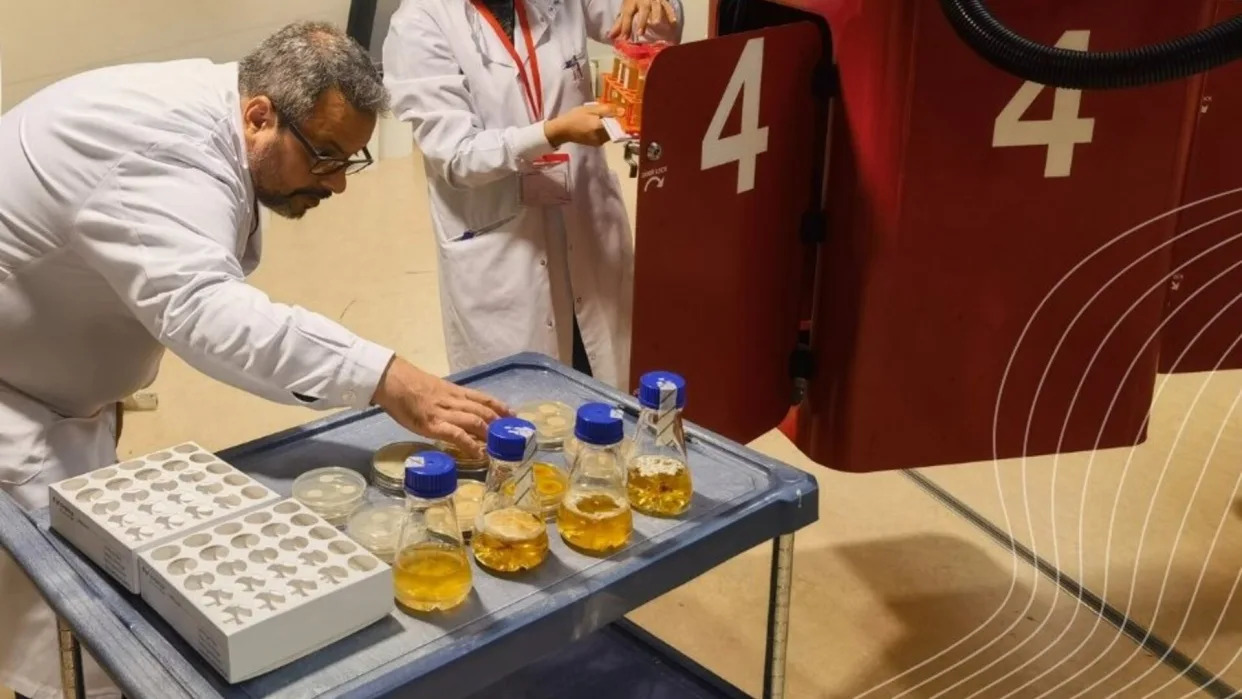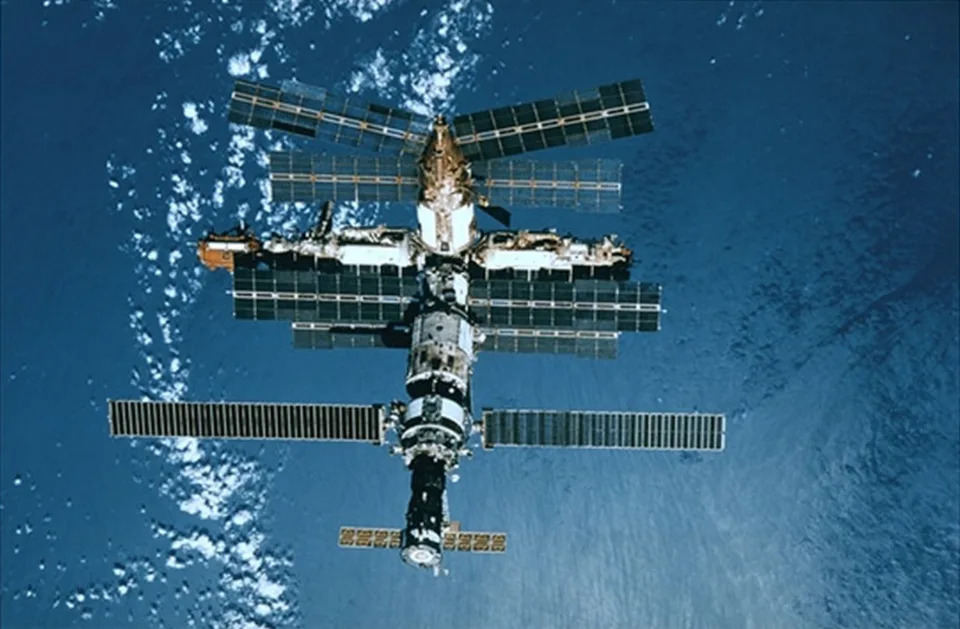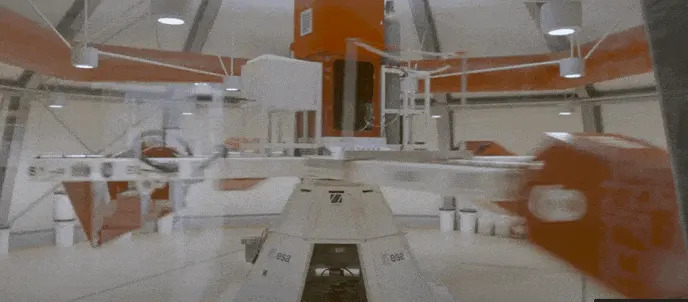FULL STORY
Sound waves thought to be from a 2014 meteor fireball north of Papua New Guinea were almost certainly vibrations from a truck rumbling along a nearby road, new Johns Hopkins University-led research shows. The findings raise doubts that materials pulled last year from the ocean are alien materials from that meteor, as was widely reported.
"The signal changed directions over time, exactly matching a road that runs past the seismometer," said Benjamin Fernando, a planetary seismologist at Johns Hopkins who led the research.
"It's really difficult to take a signal and confirm it is not from something. But what we can do is show that there are lots of signals like this, and show they have all the characteristics we'd expect from a truck and none of the characteristics we'd expect from a meteor."
The team will present its findings March 12 at the Lunar and Planetary Science Conference in Houston.
After a meteor entered Earth's atmosphere over the Western Pacific in January 2014, the event was linked to ground vibrations recorded at a seismic station in Papua New Guinea's Manus Island.
In 2023, materials at the bottom of the ocean near where the meteor fragments were thought to have fallen were identified as of "extraterrestrial technological" (alien) origin.
But according to Fernando, that supposition relies on misinterpreted data and the meteor actually entered the atmosphere somewhere else.
Fernando's team did not find evidence of seismic waves from the meteor.
"The fireball location was actually very far away from where the oceanographic expedition went to retrieve these meteor fragments," he said.
"Not only did they use the wrong signal, they were looking in the wrong place."
Using data from stations in Australia and Palau designed to detect sound waves from nuclear testing, Fernando's team identified a more likely location for the meteor, more than 100 miles from the area initially investigated.
They concluded the materials recovered from the ocean bottom were tiny, ordinary meteorites -- or particles produced from other meteorites hitting Earth's surface mixed with terrestrial contamination.
"Whatever was found on the sea floor is totally unrelated to this meteor, regardless of whether it was a natural space rock or a piece of alien spacecraft -- even though we strongly suspect that it wasn't aliens," Fernando added.
Fernando's team includes Constantinos Charalambous of Imperial College London; Steve Desch of Arizona State University; Alan Jackson of Towson University; Pierrick Mialle of the Comprehensive Nuclear-Test-Ban Treaty Organization; Eleanor K. Sansom of Curtin University; and Göran Ekström of Columbia University.
Story Source:
Materials provided by Johns Hopkins University. Original written by Roberto Molar Candanosa. Note: Content may be edited for style and length.
Cite This Page:MLA
APA
Chicago
Johns Hopkins University. "Interstellar signal linked to aliens was actually just a truck." ScienceDaily. ScienceDaily, 7 March 2024. <www.sciencedaily.com/releases/2024/03/240307165128.htm>.
“That is not dead which can eternal lie,
And with strange aeons even death may die.”
― The Nameless City
False-color JWST image of a small fraction of the GOODS South field, with the galaxy JADES-GS-z7-01-QU highlighted
POSTED ON MARCH 7, 2024
When a galaxy runs out of gas and dust, the process of star birth stops. That takes billions of years. But, there’s a galaxy out there that was already dead when the Universe was only 700 billion years old. What happened to it?
That’s what an international team of astronomers wants to know. “The first few hundred million years of the Universe was a very active phase, with lots of gas clouds collapsing to form new stars,” said Tobias Looser from the Kavli Institute for Cosmology at the University of Cambridge. “Galaxies need a rich supply of gas to form new stars, and the early universe was like an all-you-can-eat buffet.”
So, when the galaxy JADES-GS-z7-01-QU showed up in a JWST observation, it didn’t exhibit much evidence of ongoing star formation. (JADES stands for JWST Advanced Deep Extragalactic Survey.) It’s in what astronomers refer to as a “quenched” state and looks like star formation started and quickly stopped. Figuring out why this happened to the young galaxy is an important step in cosmology. Why did it stop creating stars? And, were the factors that affect star formation the same then as they are today?

(Credit : ESO/M Hayes)
When a Galaxy Stops Forming Stars
Star-formation quenching is something astronomers don’t expect to happen quickly. “It’s only later in the universe that we start to see galaxies stop forming stars, whether that’s due to a black hole or something else,” said Dr Francesco D’Eugenio, also from the Kavli Institute for Cosmology and a co-author with Looser on a recent paper about JADES-GS-z7-01-QU.
Star birth usually begins as clouds of gas coalesce together. Gas-rich regions, including galaxies, are prime spots for star-birth nurseries. JWST data about JADES-GS-z7-01-QU shows that this baby galaxy experienced a very intense period of star formation shortly after it began forming (after the Epoch of Reionization). For somewhere between 30 to 90 million years, it was ablaze with star formation. Then, suddenly, it stopped.
That’s not surprising—although astronomers aren’t sure why it stopped. Clearly, it ran out of gas. Maybe a supermassive black hole at its heart gobbled up much of the available “star stuff”. The black hole’s rapidly moving winds and jets could also have shoved a great deal of the star-birth material completely out of the galaxy. It’s also possible that the very rapid pace of star formation that JADES-GS-z7-01-QU experienced simply used up the supply. That’s not impossible, according to Looser. “Everything seems to happen faster and more dramatically in the early universe, and that might include galaxies moving from a star-forming phase to dormant or quenched,” he said.
Figuring out the Answer
It’s not clear from the current JWST data what happened to this little galaxy back at the dawn of time. Astronomers are still probing the data. “We’re not sure if any of those scenarios can explain what we’ve now seen with Webb,” said paper co-author Professor Roberto Maiolino. “Until now, to understand the early Universe, we’ve used models based on the modern universe. But now that we can see so much further back in time, and observe that the star formation was quenched so rapidly in this galaxy, models based on the modern universe may need to be revisited.”

That means more observations using JWST. “We’re looking for other galaxies like this one in the early universe, which will help us place some constraints on how and why galaxies stop forming new stars,” said D’Eugenio. “It could be the case that galaxies in the early universe ‘die’ and then burst back to life – we’ll need more observations to help us figure that out.”
There’s one other possibility that astronomers will want to probe. JADES-GS-z7-01-QU looked dead at the time of its life when JWST observed it. But, it’s possible that the star-birth quenching was only a temporary thing. Maybe it was caused by periodic outflows of star-stuff material to interstellar space (driven by the black hole in the nucleus). Other galaxies have also been observed to be taking a star-birth break, but they’re much more massive than this one.
Perhaps JADES-GS-z7-01-QU started up the star-forming factory later in its history. In that case, it could well have grown much more massive in later epochs of cosmic history. And, this provides an intriguing idea: perhaps other “quenched” galaxies also took a break, then got a massive infusion of gas—perhaps through collisions with other galaxies—to create later generations of stars. Future JWST observations should uncover more of these galaxies and that should allow astronomers to study their quenched phases in more detail.
AI makes a rendezvous in space
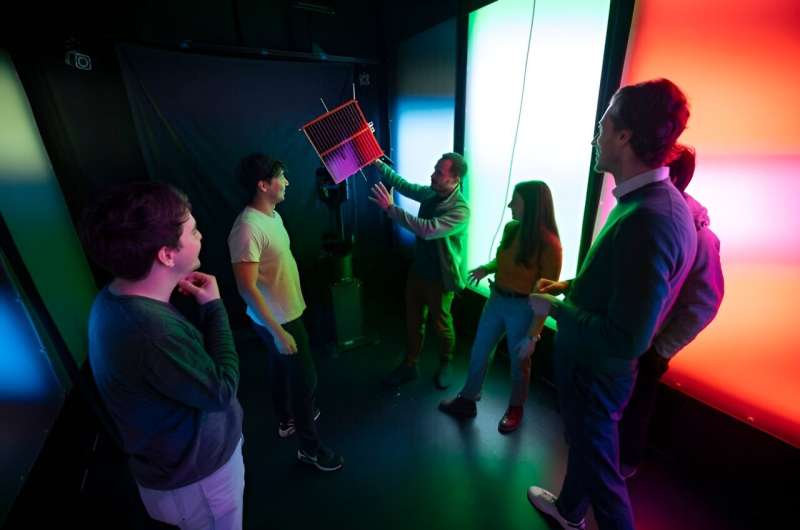
Space travel is complex, expensive, and risky. Great sums and valuable payloads are on the line every time one spacecraft docks with another. One slip and a billion-dollar mission could be lost. Aerospace engineers believe that autonomous control, like the sort guiding many cars down the road today, could vastly improve mission safety, but the complexity of the mathematics required for error-free certainty is beyond anything on-board computers can currently handle.
In a new paper presented at the IEEE Aerospace Conference in March 2024 and published on the preprint server arXiv, a team of aerospace engineers at Stanford University reported using AI to speed the planning of optimal and safe trajectories between two or more docking spacecraft. They call it ART—the Autonomous Rendezvous Transformer—and they say it is the first step to an era of safer and trustworthy self-guided space travel.
Hail CAESAR
In autonomous control, the number of possible outcomes is massive. With no room for error, they are essentially open-ended.
"Trajectory optimization is a very old topic. It has been around since the 1960s, but it is difficult when you try to match the performance requirements and rigid safety guarantees necessary for autonomous space travel within the parameters of traditional computational approaches," said Marco Pavone, an associate professor of aeronautics and astronautics and co-director of the new Stanford Center for AEroSpace Autonomy Research (CAESAR).
"In space, for example, you have to deal with constraints that you typically do not have on the Earth, like, for example, pointing at the stars in order to maintain orientation. These translate to mathematical complexity."
"For autonomy to work without fail billions of miles away in space, we have to do it in a way that on-board computers can handle," added Simone D'Amico, an associate professor of aeronautics and astronautics and fellow co-director of CAESAR. "AI is helping us manage the complexity and delivering the accuracy needed to ensure mission safety, in a computationally efficient way."
CAESAR is a collaboration between industry, academia, and government that brings together the expertise of Pavone's Autonomous Systems Lab and D'Amico's Space Rendezvous Lab. The Autonomous Systems Lab develops methodologies for the analysis, design, and control of autonomous systems—cars, aircraft, and of course, spacecraft.
The Space Rendezvous Lab performs fundamental and applied research to enable future distributed space systems whereby two or more spacecraft collaborate autonomously to accomplish objectives otherwise very difficult for a single system, including flying in formation, rendezvous and docking, swarm behaviors, constellations, and many others. The lab is planning a launch workshop for May 2024.
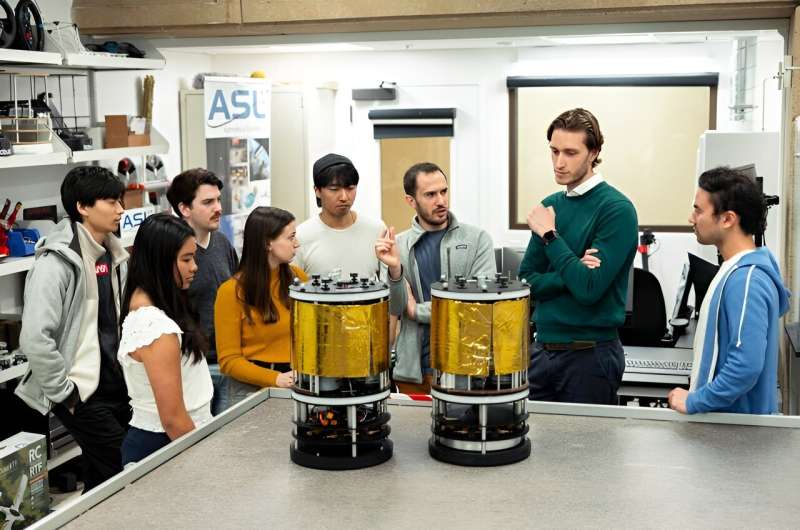
A warm start
The Autonomous Rendezvous Transformer is a trajectory optimization framework that leverages the massive benefits of AI without compromising on the safety assurances needed for reliable deployment in space. At its core, ART involves integrating AI-based methods into the traditional pipeline for trajectory optimization, using AI to rapidly generate high-quality trajectory candidates as input for conventional trajectory optimization algorithms.
The researchers refer to the AI suggestions as a "warm start" to the optimization problem and show how this is crucial to obtain substantial computational speed-ups without compromising on safety.
"One of the big challenges in this field is that we have so far needed 'ground in the loop' approaches—you have to communicate things to the ground where supercomputers calculate the trajectories and then we upload commands back to the satellite," explains Tommaso Guffanti, a postdoctoral fellow in D'Amico's lab and first author of the paper introducing the Autonomous Rendezvous Transformer.
"And in this context, our paper is exciting, I think, for including artificial intelligence components in traditional guidance, navigation, and control pipeline to make these rendezvous smoother, faster, more fuel efficient, and safer."
Next frontiers
ART is not the first model to bring AI to the challenge of space flight, but in tests in a terrestrial lab setting, ART outperformed other machine learning-based architectures. Transformer models, like ART, are a subset of high-capacity neural network models that got their start with large language models, like those used by chatbots. The same AI architecture is extremely efficient in parsing, not just words, but many other types of data such as images, audio, and now, trajectories.
"Transformers can be applied to understand the current state of a spacecraft, its controls, and maneuvers that we wish to plan," Daniele Gammelli, a postdoctoral fellow in Pavone's lab, and also a co-author on the ART paper. "These large transformer models are extremely capable at generating high-quality sequences of data."
The next frontier in their research is to further develop ART and then test it in the realistic experimental environment made possible by CAESAR. If ART can pass CAESAR's high bar, the researchers can be confident that it's ready for testing in real-world scenarios in orbit.
"These are state-of-the-art approaches that need refinement," D'Amico says. "Our next step is to inject additional AI and machine learning elements to improve ART's current capability and to unlock new capabilities, but it will be a long journey before we can test the Autonomous Rendezvous Transformer in space itself."
More information: Tommaso Guffanti et al, Transformers for Trajectory Optimization with Application to Spacecraft Rendezvous, arXiv (2023). DOI: 10.48550/arxiv.2310.13831
News
By Meredith Garofalo
In 2021, a solar storm was recorded by multiple different spacecraft and the results tell quite the story.

Space weather may seem like a tale from a galaxy far, far away — but when solar storms impact us on Earth, we're directly affected. These storms are what give rise to the Northern Lights, for instance. They can even lead to temporary disruptions in our communications systems and power grid. From these solar flares, we can learn so much — and a recent release from NASA shares how, back in 2021, one in particular had a brilliant story to go with it. As space agencies continue to send astronauts into our planet's orbit, and start planning for journeys even beyond, ways of monitoring solar storms and their impacts will become increasingly critical. These storms have the potential to harm humans, satellites and spacecraft; a release from 2023 by the European Space Agency discussed how, for the first time, such energetic particles were simultaneously observed on the surfaces of the Earth, moon and Mars after a solar outburst. This raised important concerns.
"Space radiation can create a real danger to our exploration throughout the Solar System," Colin Wilson, ExoMars TGO project scientist, shared in the ESA's release. "Measurements of high-level radiation events by robotic missions is critical to prepare for long-duration crewed missions."
In an era with a historic number of satellites and other instruments roaming through the great unknown, NASA's heliophysics missions use spacecraft to get a deeper understanding of space phenomena and tell the stories of what happens after solar events when particles are released into space. A recent article from NASA shares a perfect example of the efforts being made to study the impacts from solar storms originating from the light of all lights: The sun. This solar outburst happened on April 17, 2021, and although these storms are not uncommon, with this specific event, the storm was so widespread that six spacecraft at different locations and positions felt the blast.
Related: Powerful solar flare unleashes colossal plasma plume, sparks radio blackouts across South Pacific (video
High-speed protons and electrons, also known as solar energetic particles (SEPs), were observed by spacecraft not only between the sun and Earth, but as far away as between Earth and Mars!

On April 17, 2021, one of the Solar Terrestrial Relations Observatory (STEREO) spacecraft captured this view of a coronal mass ejection billowing away from the Sun (which is covered by the black disk at center to better see features around it). (Image credit: NASA/STEREO-A/COR2)
According to NASA, this was the first time something like this has happened — we now have a whole different perspective on solar storms using data from multiple spacecraft versus a single one that can only provide a local insight.
Let's use a famous Marvel hero as an example: Thor creates a solar storm to wipe out a bunch of bad guys, generating lots of SEPs to send out into space. He knows, however, that there are enemies on all sides. So, he makes sure to create different balls of these SEPs that can go in all different directions, covering a much wider territory than a single beam can. With more "eyes" on a single event, we can better understand all of the different types of hazards that can come from one solar storm, which can sometimes pose a threat across a larger playing field.
"SEPs can harm our technology, such as satellites, and disrupt GPS," Nina Dresing of the Department of Physics and Astronomy, University of Turku in Finland said in a statement. "Also, humans in space or even on airplanes on polar routes can suffer harmful radiation during strong SEP events."
Dresing and her team conducted further research from the event to learn where the SEPs came from, how the particles revved up to dangerous speeds, and when they made contact with each spacecraft. The conclusions were as follows (plotted on the diagram below.) The closest to the blast (which took the blunt of the blow) was the BepiColombo spacecraft, a joint mission of the European Space Agency and JAXA. BepiColombo is en route to Mercury. The second hardest hit by particles was NASA's Parker Solar Probe, which sits extremely close to the sun. That was followed by ESA's Solar Orbiter. Parker and the Solar Orbiter were on opposing sides of the flare when it happened.
A little closer to home, NASA's Solar Terrestrial Relations Observatory (STEREO) spacecraft, STEREO-A, the NASA/ESA Solar and Heliospheric Observatory (SOHO) and NASA's Wind spacecraft were hit by the event. Finally, the farthest away and final spacecraft to detect particles from the blast were Mars orbiters: NASA’s MAVEN and ESA's Mars Express.
By determining their differences in location from around the sun and noting how many electrons and protons were observed by each spacecraft, Dresing and her team were able to paint a much clearer picture of what happened from the solar ejection.
"Multiple sources are likely contributing to this event, explaining its wide distribution," Georgia de Nolfo, a team member and heliophysics research scientist at NASA's Goddard Space Flight Center in Greenbelt, Maryland, said in the statement. "Also, it appears that, for this event, protons and electrons may come from different sources. This is not the first time that people have conjectured that electrons and protons have had different sources for their acceleration, this measurement was unique in that the multiple perspectives enabled scientists to separate the different processes better, to confirm that electrons and protons may originate from different processes."
As we know, this will not be the last time an event like this occurs, and the more research we can do, the better understanding we can have of what happens with space weather, and the more we can cautiously explore the final frontier. Future studies that stem from these results will cover a wider terrain of other phenomena; they'll be conducted by instruments including the Geospace Dynamics Constellation (GDC), SunRISE, PUNCH, and HelioSwarm.
The study was published last year in the journal Astronomy & Astrophysics.






